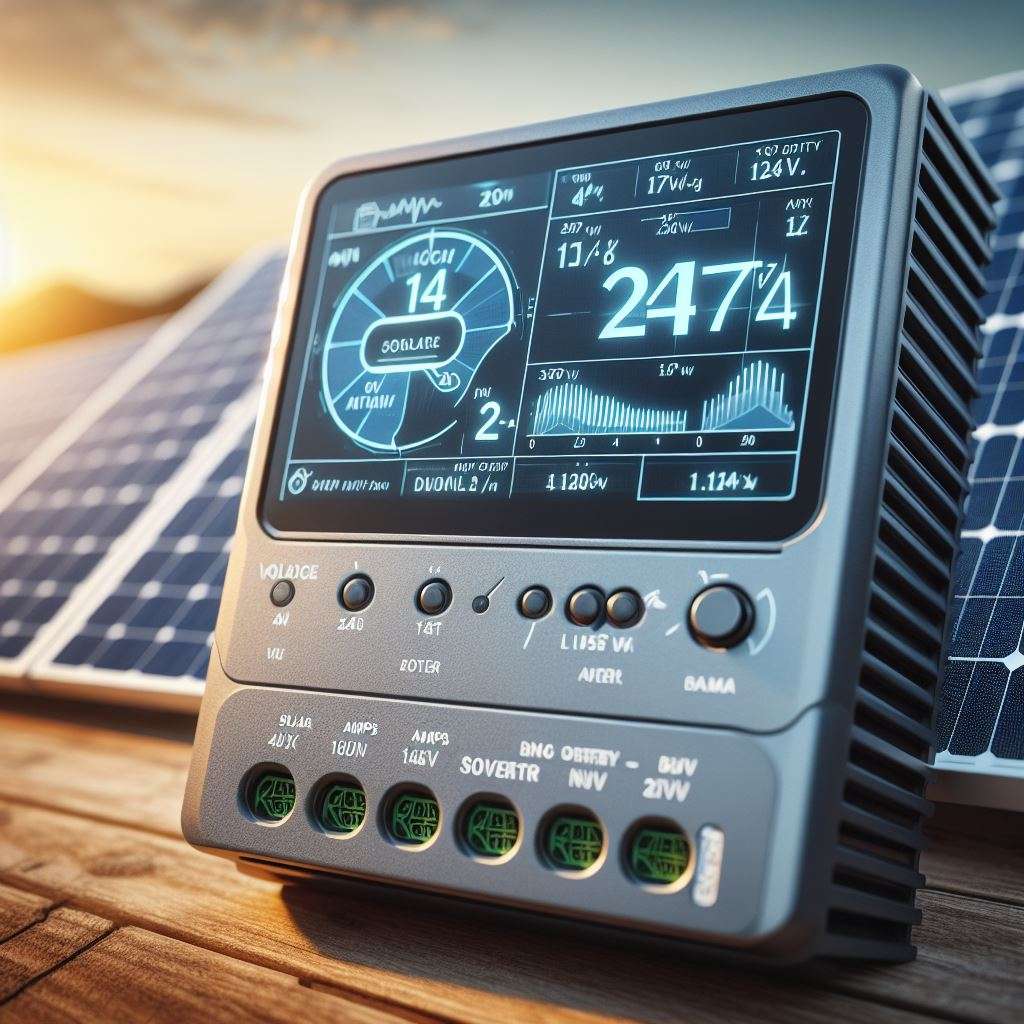Let’s delve into the fascinating world of MPPT (Maximum Power Point Tracking) charge controllers. These controllers play a crucial role in optimising solar power systems by efficiently managing the charging process. I’ll provide technical details and examples to illustrate their operation.
- What is an MPPT Charge Controller?
- An MPPT charge controller is a DC-DC converter designed to enhance the efficiency of a solar system. Its primary function is to improve the voltage match between the solar panel array and the batteries.
- The nominal voltage of a 12-volt battery varies between slightly over 10 volts and just under 13 volts, depending on the state of charge.
- MPPT controllers dynamically adjust the voltage and current to extract the maximum power from the solar panels.
- How Do MPPT Charge Controllers Work?
- Maximum Power Point Tracking (MPPT) involves finding the optimal operating point (voltage and current) at which the solar panel generates the most power.
- Here’s how MPPT controllers achieve this: a. Voltage and Current Sensing:
- The charge controller continuously monitors the output of the solar panels and compares it to the battery voltage.
- It calculates the best power output that the panel can provide to charge the battery effectively.
- The MPPT controller adjusts the voltage to match the solar panel’s maximum power point (Vmp).
- By doing so, it ensures that the panel operates at its most efficient voltage, maximizing power output.
- The controller converts the panel’s output voltage to the battery voltage.
- This conversion process boosts the current flowing into the battery, allowing it to charge faster. this is important so keep reading….
- Advantages of MPPT Charge Controllers:
- Higher Efficiency: MPPT controllers operate closer to the panel’s maximum power point, resulting in better energy harvest.
- Improved Performance: They adapt to changing environmental conditions (such as temperature and shading) to maintain optimal power output.
- Compatibility: MPPT controllers work with various panel configurations and battery types.
- Boosting Current Calculation:
- Boosting current refers to the process of increasing the current flowing into the battery during charging. It ensures efficient energy transfer.
- To calculate the boosted current, we need to consider the following parameters:
- Solar Panel Current (I_panel): The current generated by the solar panel (before any conversion).
- Solar Panel Voltage (V_panel): The voltage output of the solar panel.
- Battery Voltage (V_battery): The voltage of the battery system.
- Efficiency Factor (η): The efficiency of the MPPT charge controller (usually expressed as a decimal, e.g., 0.95 for 95% efficiency).
- The boosted current (I_boosted) can be calculated as: [ I_{\text{boosted}} = \frac{I_{\text{panel}} \cdot V_{\text{panel}}}{V_{\text{battery}} \cdot \eta} ]
- Example:
- Let’s say we have a solar panel with an output current of 8 amps (I_panel), a voltage of 36 volts (V_panel), and a battery system with a voltage of 24 volts (V_battery).
- Assuming an efficiency factor (η) of 0.95 (95%), the boosted current would be: [ I_{\text{boosted}} = \frac{8 , \text{A} \cdot 36 , \text{V}}{24 , \text{V} \cdot 0.95} \approx 12.21 , \text{A} ]
Simple math’s example.
- Panel voltage /battery voltage = Factor.
- Panel current x Factor = Output current.
Controllers tend to say “30 amp charge controller” or state the voltage and current (100/30). this is the maximum output current, this should be taken into consideration for two reasons. the array size, the battery requirements/Limit.
Where you consider the array size, you may do so in WATTS, but more watts may not mean more POWER. For example, we can apply ohms law to work out the specifics to the entire system.
Therefore a 30 amp charge controller can only provide 30 amps. ( odd that ey?)
so looking at the battery voltage the math is 30X ( bat volts)
12v x 30 = 360 watts
24v x 30 = 720 watts
48v x 20 = 1,440 watts
Because there is a math thing called “conservation of energy” or what goes in can come out. we know this would be the max power …. or is it?
We can add the losses, often referred to as “over paneling” by those who account for this as “clipping”.
The “over paneling” would be around 25% as there is a charge loss in converting the voltage, and also in charge to the battery. Any excess is generated as heat, and thats a bad thing.
One last thing…
ensure that your power is enough and not too much. reading the battery documents will give you some idea as to the charge current limit.
Another thing is the panel performance over the year, if you measure by PEAK power, this could lead to a short fall.

No responses yet